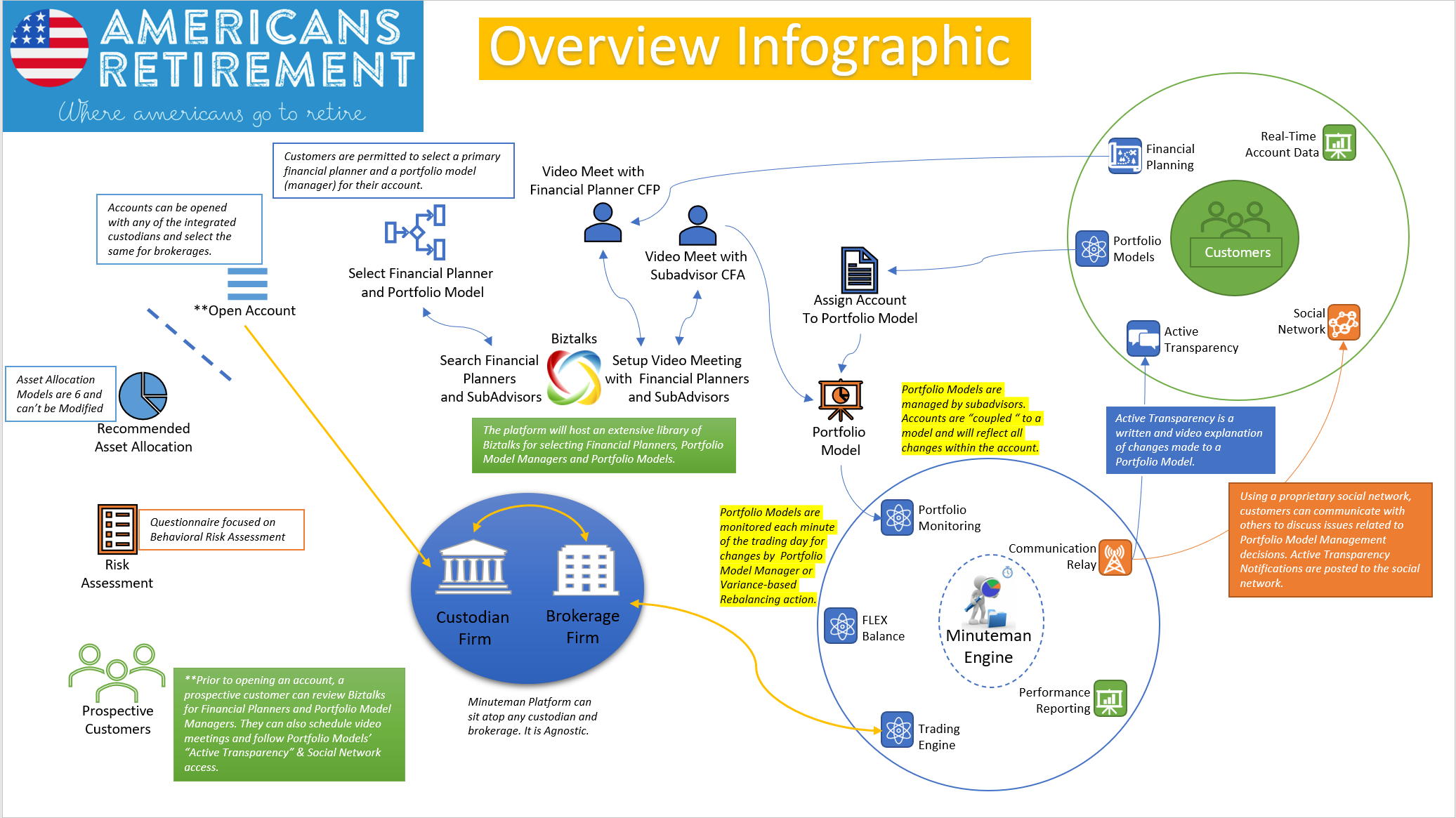
A Complete Solution for American Retirements
With “Baby Boomers” starting their retirement, they will be responsible for managing their 401(k) investments now being available for withdrawal. Americans Retirement represents the most comprehensive solution available.
Modern Retirement Planning is more akin to Pension Management.
It's time American families receive Pension Fund Services they deserve.
Brief History About American Pensions
Sixty years ago an American worker longed to work at a large company for their entire career and then retire with a Gold Watch and Fat Pension (otherwise known as a Defined Benefit Plan*). But over the years, companies raided their pension funds or underfunded liabilities and employees found themselves without the security that they once thought they had earned.
1980 – 35.9 million private-sector workers (46 percent of all private-sector workers) are covered by a pension plan.
2006 – 20% of all private sector workers are covered by defined benefit plans and 43% of all private sector workers are covered by defined contributions plans.
Defined Benefit Plan is referred to as a pension program that is based on the amount of commitments of payments to the participants. Defined Contribution Plan is a common workplace retirement plan (ie. 401k) in which an employee contributes money and the employer typically makes a matching contribution.
Corporate Mismanagement and the Death of Defined Benefit Pensions
An example of this was one of the world’s largest airlines, Pan Am. At the time of the company’s bankruptcy, 34,000 participants including 11,000 retirees, was $800 million short and the defined benefit plan for flight engineers, which had 750 participants (including 550 retirees) was underfunded by about $40 million. The agency (Pension Benefit Guaranty Corporation), which guarantees payment of basic retirement benefits earned by 40 million American workers and retirees, had assets of $3.3 billion and liabilities of $5.1 billion at the end of the 1990 fiscal year, which ended Sept. 30. That includes only a portion of $700 million in unfunded liabilities from Eastern Air Lines, which went out of business in January 1990. Losses for fiscal 1990 totaled $928 million, including a portion of both the Eastern and Pan Am losses.
The New York Times ArticleShifting the Burden from Employer to the Employee
It is often said that “Necessity is the Mother of Invention”. In 1978 a section of the Internal Revenue Code (401(k)) was enacted to allow taxpayers to defer taxation on deferred income. In 1980, a benefits consultant named Ted Benna took note of the previously obscure provision and figured out that it could be used to create a simple, tax-advantaged way to save for retirement. 3 With the birth of the 401(k) plan, the advent of the defined contribution plan began and today we know it as one of the most prevalent ways for employees to save for their retirement. As a side note, it is this author’s opinion that the once great leverage corporations had to retain valuable talent was squandered for the sake of greed. Now the employee is empowered to provide for their own retirement, allowing them to constantly negotiate for themselves knowing that their retirement savings is portable.
Wikipedia InformationState of the American Retirement Planning
Like a perfect storm, the appetite for 401(k) plans was only matched by the proliferation of Mutual Funds. Compa nies like Vanguard and Fidelity became financial behemoths in the wake of the fire hose of deposits looking for a place to invest. This fire hose of investment money was being fed by one of the largest demographic bubbles in the US history (known as Baby Boomers).
Subsequently, the early 80’s marked the beginning of the most powerful “Bull Market” in US history which provided the capital to fuel quantum leaps in technology. In the early 90’s, the advent of the internet, and its popularity as a means of commerce, brought about a number of iterations that led us to the current technological landscape. Today, the majority of investors have high speed access to the internet at work and home, while having continuous access to the internet with smartphones and tablets.
This access to the internet has brought about a flood of information never before available. However, we are at a time of “information overload” and “analysis paralysis”. The average investor is now confused about what information is important and what should be ignored. This is the state of the industry as the greatest shift in investment requirements is beginning. With “Baby Boomers” starting their retirement, they will be responsible for managing their 401(k) investments now being available for withdrawal. Now who will help them manage their largest non-real estate assets?
